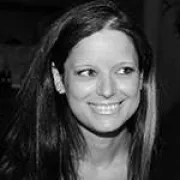I tried to photograph the mysterious, true and magical soul of popular Spain in all its passion, love, humor, tenderness, rage, pain, in all its truth; and the fullest and most intense moments in the lives of these characters, as simple as they are irresistible, with all their inner strength.
Ever since its invention back in the 18th century, photography has been documenting life. At the same time it focuses on inviting audiences to a rather subjective world, while trying to be taken serious as an art form. Photography has always been considered a male dominated profession, but luckily things are changing. Scholars, writers, bloggers, photography students and enthusiasts have been giving due to the female pioneers of the field. Most of them were always standing and/or hiding in the shadows, oblivious to how much they could acclaim and accomplish. Arguably, the technique, concepts and thematic female photographers use differ from those of a male photographer. At a time when most women were convinced that their place was in the kitchen and certainly not in the dark room, there were those who were struggling to surpass their male counterparts and work towards gaining respect and recognition for their work.

Cristina García Rodero (Spanish photographer, 1949-) studied painting in Madrid and worked as a teacher, before taking up photography. She dedicated her time to researching and photographing popular and traditional Spanish festivities – religious and pagan – both in Spain and the Mediterranean Europe. It was this dedication that prompted her to publish the book España Oculta in 1989, which won her the Book of the Year Award at the Arles Festival of Photography. One the most celebrated documentary photographers in Spain, García Rodero focuses on how Spanish religious rites and festivals still flourish in modern times. Most recently, she has travelled around the world in search of other cultures with rural traditions. From documenting voodoo rituals in Haiti to the cult of María Lionza in Venezuela and Holi, the Hindu festival of colors in India, Cristina’s work is always characterized by a considerable ethnological value. García Rodero is the recipient of many prestigious prizes, including the W. Eugene Smith Foundation Prize and the Premio Nacional de Fotografía. She has published and exhibited her work all over the word and has been a member of Agence Vu for more than 15 years. She also joined Magnum Photos in 2005 and became a full member in 2009. Her native city of Puertollano inaugurated the Cristina García Rodero Museum back in 2018, where a large part of the internationally acclaimed photographer’s work is exhibited.

Christa Cowrie (German-Mexican photographer, 1949-) was born in Germany and moved to Mexico at the age of 14. She studied photography with Lázaro Blanco Fuentes and slowly began her professional career as a photojournalist in 1975, creating photographic essays for the Excélsior newspaper. Halfway through the 90’s Cowrie’s work started shifting from journalism to theatre and dance photography. In 1996, she began to work with the Centro de Investigación de Teatro y Danza and Cenidi-Danza, documenting dance and theatre events in Mexico. She’s also in charge of organizing publications in books, CDs, web pages and digital libraries. She has been collaborating with Proceso magazine since 2002, where her work has been featured several times. Cowrie is an official photographer of the Festival Internacional Cervantino and makes sure the photography department of the festival runs smoothly. The German-Mexican photographer has had her work exhibited in over 75 solo and group exhibitions throughout the years. Her photographs have been shown in the United States, Canada, Cuba, Italy, France and many other countries. Her archive of dance and theatre photos has been used to illustrate publications of many Mexican theatres. She has published her body of work in several books and periodicals, including Time Magazine, The New York Times and more. Christa’s work has been recognized with membership in the Salón de la Plástica Mexicana, and in 2015, she received the Silver Camera Prize from Cuartoscuro magazine for her life’s work.

I found in dance the eternal exercise to be ready for the shot. It is a visual exercise with energy and discipline because modern dance is completely unpredictable. Many like sports because one must shoot at the right time, but it has never quite satisfied me; dance has.
We will continue talking about female names that left their mark in photography and about contemporary female photographers who are still to emerge. There are a lot of female photographers out there deserving of praise and we can only hope to cover as many of them as we can. Please, follow this space to find out more.







